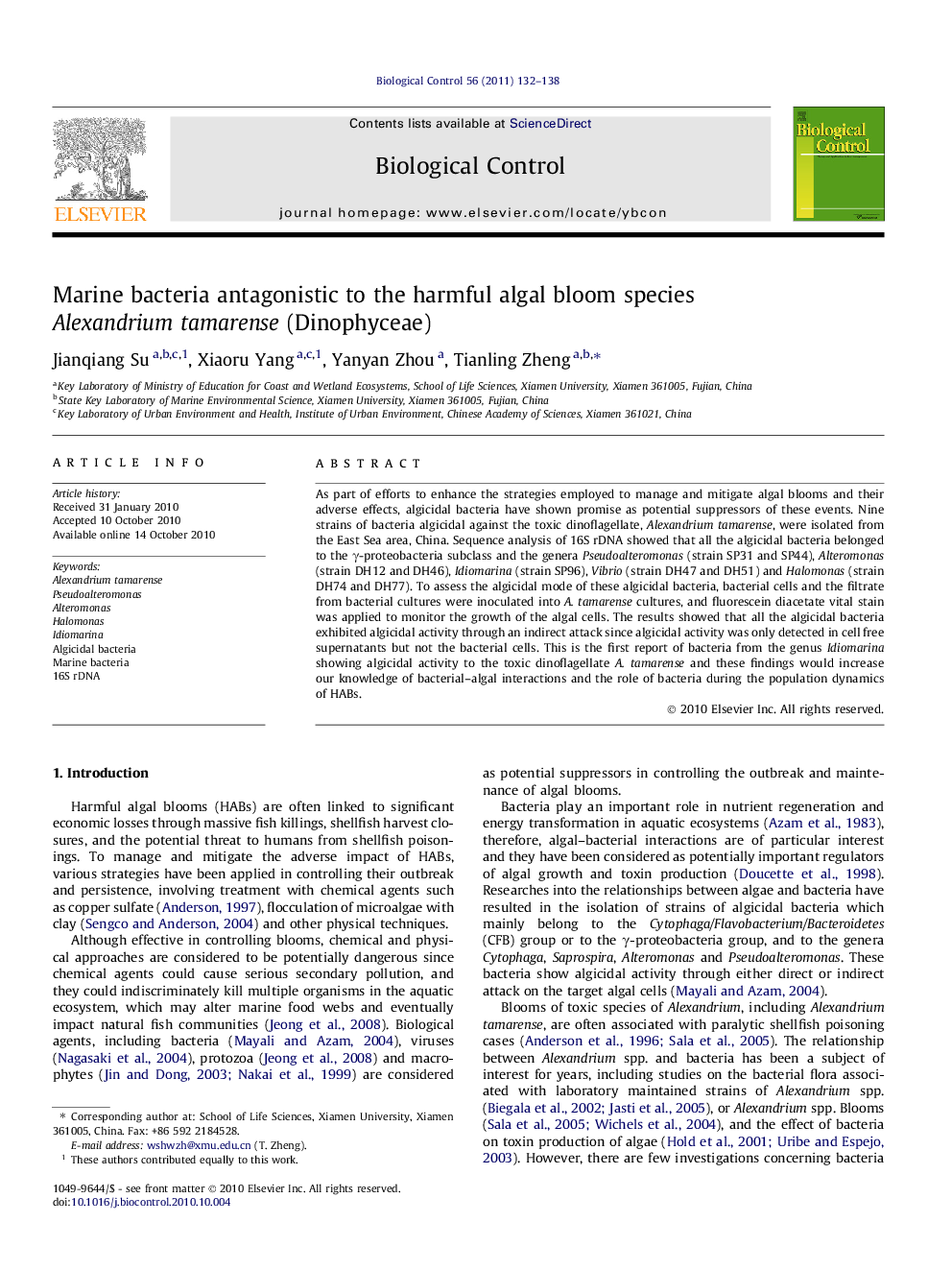| Article ID | Journal | Published Year | Pages | File Type |
|---|---|---|---|---|
| 4504364 | Biological Control | 2011 | 7 Pages |
As part of efforts to enhance the strategies employed to manage and mitigate algal blooms and their adverse effects, algicidal bacteria have shown promise as potential suppressors of these events. Nine strains of bacteria algicidal against the toxic dinoflagellate, Alexandrium tamarense, were isolated from the East Sea area, China. Sequence analysis of 16S rDNA showed that all the algicidal bacteria belonged to the γ-proteobacteria subclass and the genera Pseudoalteromonas (strain SP31 and SP44), Alteromonas (strain DH12 and DH46), Idiomarina (strain SP96), Vibrio (strain DH47 and DH51) and Halomonas (strain DH74 and DH77). To assess the algicidal mode of these algicidal bacteria, bacterial cells and the filtrate from bacterial cultures were inoculated into A. tamarense cultures, and fluorescein diacetate vital stain was applied to monitor the growth of the algal cells. The results showed that all the algicidal bacteria exhibited algicidal activity through an indirect attack since algicidal activity was only detected in cell free supernatants but not the bacterial cells. This is the first report of bacteria from the genus Idiomarina showing algicidal activity to the toxic dinoflagellate A. tamarense and these findings would increase our knowledge of bacterial–algal interactions and the role of bacteria during the population dynamics of HABs.
Graphical abstractPhylogenetic tree of nine strains of algicidal bacteria against Alexandrium tamarense including reported algicidal bacteria. The codes after the names are the GenBank Accession numbers. Figure optionsDownload full-size imageDownload as PowerPoint slideResearch highlights► In this study, nine strains of algicidal bacteria against Alexandrium tamarense was isolated and identified. ► Characterization of the bacteria and the mode of algicidal action were also undertaken in this study. ► The results showed that all the bacterial isolates exhibited algicidal activity through an indirect attack and most of the algicidal metabolites were heat stable. ► This is the first report that a bacterium related to Idiomarina showed algicidal activity to HAB dinoflagellate. ► These findings would increase our knowledge of bacterial–algal interactions and the role of bacteria during the population dynamics of HABs.
